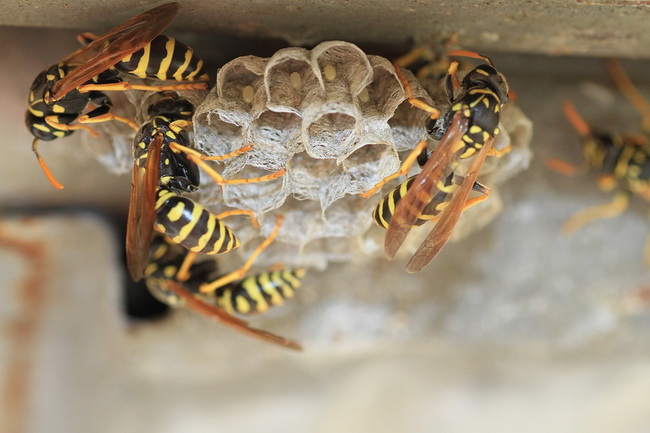- Make It Yourself Lavender Heart-Shaped Bath Bombs!
- 20 Things You Never Knew About “Down There”
- 12 Best Foods For Those Suffering From Arthritis Pain
- 12 Personal Hygiene Mistakes Almost Everyone Makes (Mom Never Told You About #4!)
- 15 Medicinal Plants And Herbs From The Cherokee People
- 12 Mind-Blowing Benefits Of Drinking Coconut Water During Pregnancy
- 12 Outstanding Winter Foods That Won’t Fatten You Up Like A Christmas Turkey
Completely Natural Ways to Get Rid of Wasps and Treat Stings

Photo credit: bigstock.com
Spring has sprung, friends, and that means more time outdoors, picnics, parties, working in the garden, watching the kids play outside. It also means more stinging insects like wasps. Although wasps are actually good for the environment, they pollinate plants and eat other insects, but too many wasps can be a problem. Unlike honeybees that can only sting once, then die, wasps can sting again and again, which is not only painful, but can be downright dangerous if you or someone in your family is allergic to their stings.
An occasional wasp is one thing, but once they make a nest, that is something most people find intolerable in their yard. There are many ways to get rid of wasps or stop them from making your yard their home. One of them is to buy one of those long reaching poisons. Those should be your absolute last resort as they spread over a fairly wide area and can kill bees, butterflies, or anything else small that the spray reaches.
There are plenty of natural ways to keep wasps out of your yard and outsmart them at their own game. Once you understand a bit about how wasps work, and what attracts them, you will find that keeping them out of your neck of the woods is easier than you thought.
Keep reading. We not only have some great ways to outsmart those wasps, but natural ways to treat those stings if you should get too closely acquainted!
1. Prevention
Prevention now, in the early spring, can go a long way towards trying to deal with a bigger problem later in the summer.
- In spring and the early summer, wasps are looking for protein. Normally this would be grasshoppers or ants but the leftovers of your summer picnic, cat food, or open garbage containers will all do just fine. Wasps imprint on their food sources, which means that once they find food, they will keep coming back to that area in hopes of a repeat performance again and again. Remove or cover all food sources and trash cans.
- By mid-summer through fall, wasp’s food preferences change to the sweet side. They also become more aggressive looking for those sweets. So clean up fruit that has fallen to the ground underneath trees, cover open soda cans or juice containers, and don’t leave the trash uncovered.
- Seal entry points around your home or in out buildings. If you see single wasps close to your house, follow it (at a safe distance) and see if it is building a nest in an entry point. Sealing common nesting locations, such as door frames, dampers, cracks around windows, unsealed vents, and cracked wood, such as porch covers or eves.
- Don’t wear bright colors or floral patterns. Wasps like flowers, too, and if you look like a giant flower, they might find you more interesting than you find them! Avoid perfume as well. A sweet smell means food to a wasp.
- Don’t Swat or Squish wasps! Although that might be your first reaction, when you swat or squish a wasp, it releases pheromone, a chemical that actually attracts wasps and gets them excited. Just walk away from an annoying wasp and it should go away.
- Paint your house blue! Or at least paint underneath the eves of the house or other areas where wasps tend to make nests. Wasps won’t build nests on blue paint.
Continue to Page 2

































